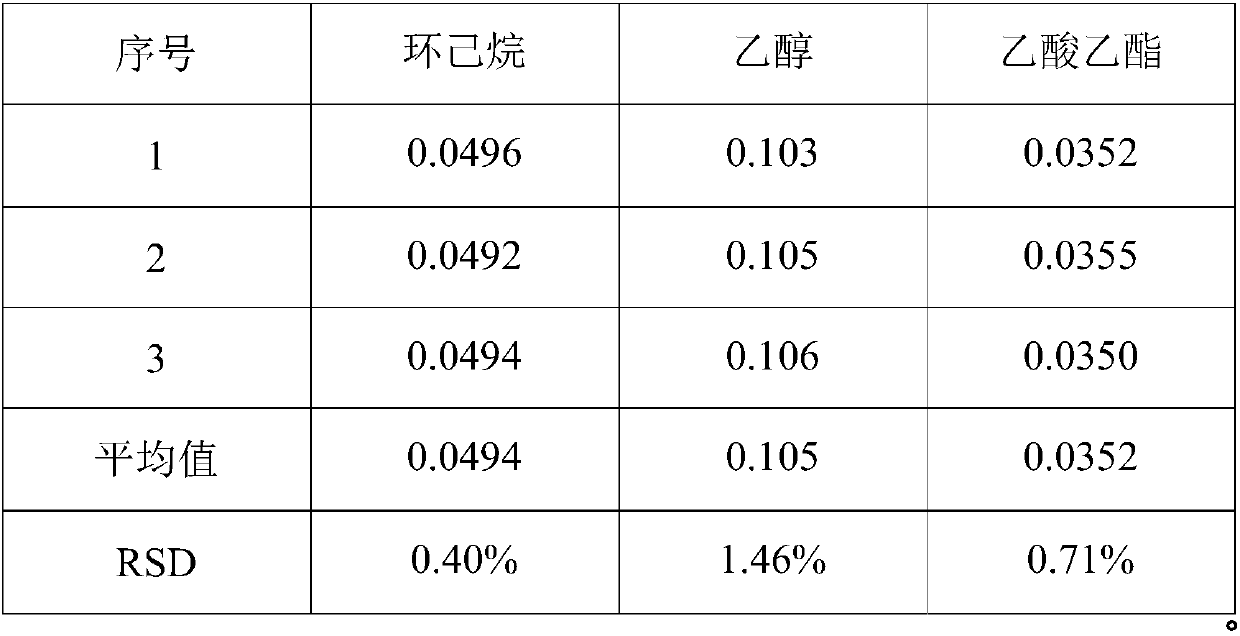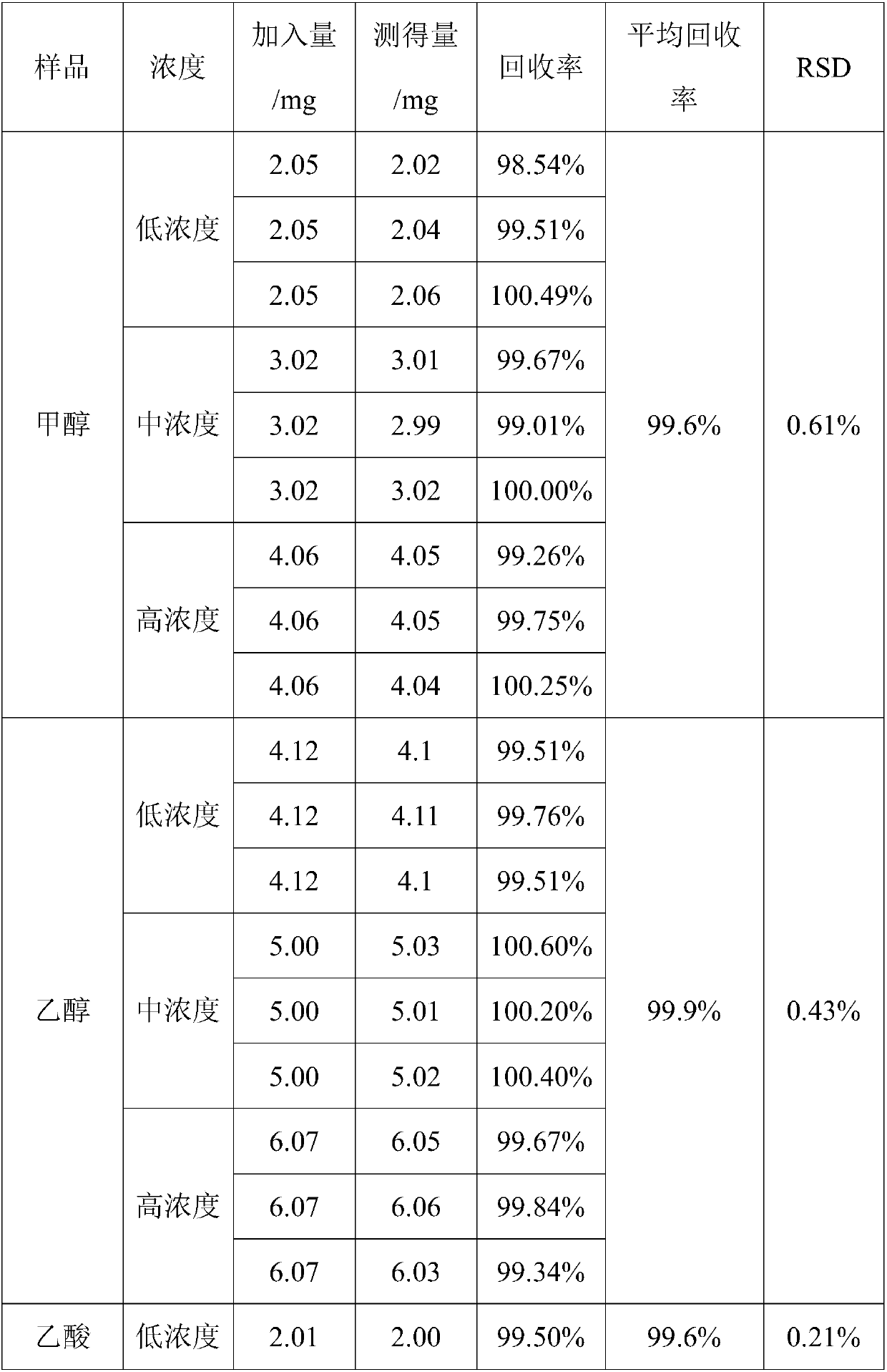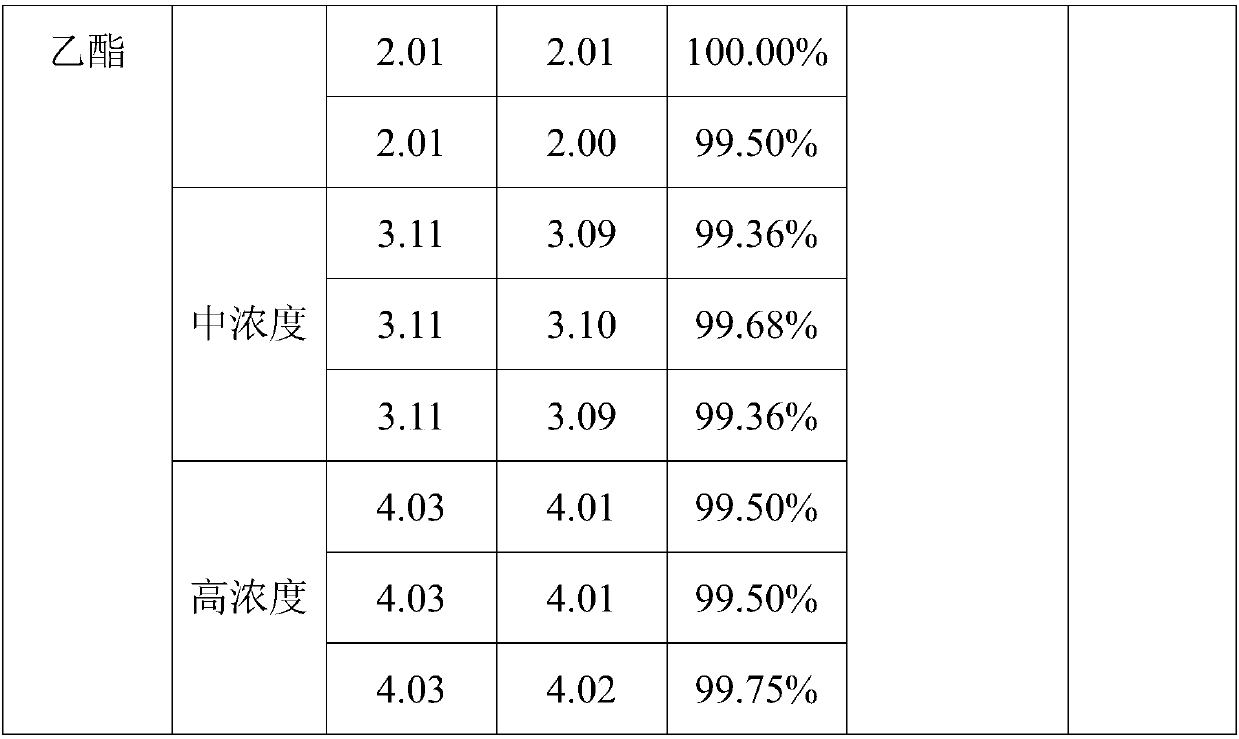Method for determination of residual solvents in ginkgo leaf extract by headspace gas chromatography
A headspace gas chromatography and residual solvent technology, which is used in measuring devices, instruments, scientific instruments, etc., to achieve the effect of simple and convenient sample processing, extended analysis time, and good separation.
- Summary
- Abstract
- Description
- Claims
- Application Information
AI Technical Summary
Problems solved by technology
Method used
Image
Examples
Embodiment 1
[0022] Example 1 Sample detection and detection method repeatability experiment
[0023] Preparation of Ginkgo biloba extract:
[0024] Take 100kg of ginkgo leaves, add water-containing ethanol for reflux extraction twice, add 750L of 80% ethanol for reflux extraction for 2 hours for the first time, add 650L of 70% ethanol for 2 hours for reflux extraction for the second time, add 500L water for reflux extraction for 2 hours for the third time, Combine the first two ethanol extracts, concentrate under reduced pressure until there is no alcohol smell, add 200L of cold water, stir evenly, let stand overnight, filter with suction, collect the filtrate, combine with the water extract, pass through polyamide 35L D-101 resin, Wash 100L with water, collect and set aside, then elute 70L with 70% ethanol, concentrate under reduced pressure to 10L, extract 3 times with ethyl acetate, each extraction volume is 12L, 10L, 8L respectively, and collect the extract and raffinate respectively ...
Embodiment 2
[0033] Example 2 Ginkgo biloba extract sample detection
[0034] Preparation of Ginkgo biloba extract:
[0035]Take 100 kg of ginkgo leaves, add water-containing ethanol for reflux extraction twice, first add 800 L of 80% ethanol for reflux extraction for 2 hours, add 600 L of 70% ethanol for the second time for reflux extraction for 2 hours, and add 600 L of water for the third time for reflux extraction for 2 hours. Combine the first two ethanol extracts, concentrate under reduced pressure until there is no alcohol smell, add 150L of cold water, stir evenly, let stand overnight, filter with suction, collect the filtrate, combine with the water extract, pass through polyamide 35L D-101 resin, Wash 100L with water, collect and set aside, then elute 70L with 70% ethanol, concentrate under reduced pressure to 10L, extract 3 times with ethyl acetate, each extraction volume is 12L, 10L, 8L respectively, and collect the extract and raffinate respectively , the extract was concentr...
Embodiment 3
[0043] Example 3 Ginkgo biloba extract sample detection
[0044] Preparation of Ginkgo biloba extract:
[0045] Take 100kg of ginkgo leaves, add water-containing ethanol for reflux extraction twice, first add 600L of 80% ethanol for reflux extraction for 2 hours, add 700L of 70% ethanol for the second time for reflux extraction for 2 hours, and add 550L of water for the third time for reflux extraction for 2 hours, Combine the first two ethanol extracts, concentrate under reduced pressure until there is no alcohol smell, add 180L of cold water, stir evenly, let stand overnight, filter with suction, collect the filtrate, combine with the water extract, pass through polyamide 35L D-101 resin, Wash 100L with water, collect and set aside, then elute 70L with 70% ethanol, concentrate under reduced pressure to 10L, extract 3 times with ethyl acetate, each extraction volume is 12L, 10L, 8L respectively, and collect the extract and raffinate respectively , the extract was concentrate...
PUM
| Property | Measurement | Unit |
|---|---|---|
| length | aaaaa | aaaaa |
| thickness | aaaaa | aaaaa |
| thickness | aaaaa | aaaaa |
Abstract
Description
Claims
Application Information
 Login to View More
Login to View More - R&D
- Intellectual Property
- Life Sciences
- Materials
- Tech Scout
- Unparalleled Data Quality
- Higher Quality Content
- 60% Fewer Hallucinations
Browse by: Latest US Patents, China's latest patents, Technical Efficacy Thesaurus, Application Domain, Technology Topic, Popular Technical Reports.
© 2025 PatSnap. All rights reserved.Legal|Privacy policy|Modern Slavery Act Transparency Statement|Sitemap|About US| Contact US: help@patsnap.com



